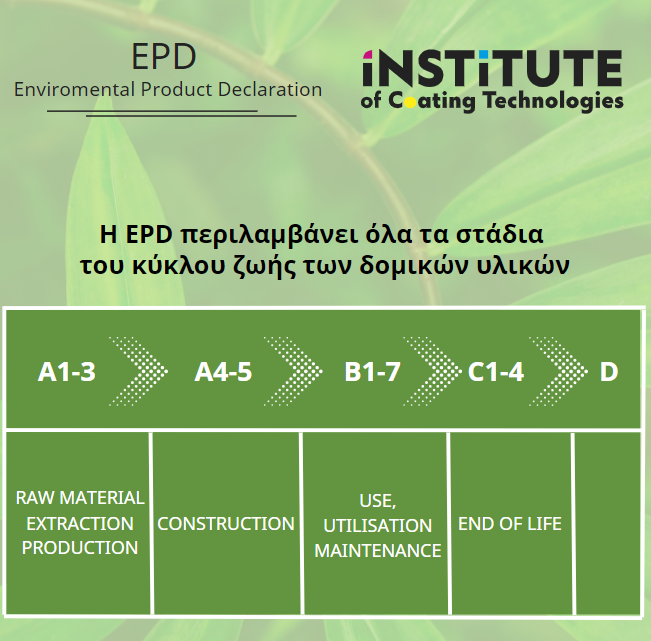EPD – Environmental Product Declaration
An Environmental Product Declaration (EPD) tells the environmental story of your product over its life cycle. It is accurate, independently verified, and globally recognized. An EPD demonstrates your commitment to environmental sustainability.
What EPDs are
An EPD is a short version of a full Life Cycle Assessment (LCA) study. The LCA study follows specific rules for the relevant product category known as the Product Category Rules (PCR). This ensures consistency and comparability.
The EPD is an ISO type III Environmental Declaration acc. ISO 14025 standard
As that, the EPD differs in many aspects from ISO type I third-party (independent eco-labels) and type II self-declared eco-labels. No secret, the EPDs relevance is steadily growing in voluntary and mandatory engagements.
Environmental Product Declarations (EPD) are a standardised way of providing data about the environmental impacts of a product through the product life cycle. In Europe, they must conform to the European Standard, EN 15804, which ensures that EPD for construction products use a common methodology, report a common set of environmental indicators and have a common reporting format. This means that EPD can be integrated into building level assessment and used to compare construction products in a building context. In EN 15804, the impacts of construction products are modelled over four life cycle stages:
· The product stage (A1-A3) showing the impacts of manufacture and the supply chain from the “cradle to gate”;
· The construction stage (A4-A5) showing the impacts of transport and construction on site;
· The use stage (B1-B7) showing the impacts of any emissions in use, maintenance, expected repair or replacement and any energy or water consumed in use;
· The end of life stage (C1-C4) showing the impacts of demolition or deconstruction, transport to waste processing and any recovery or disposal processes.
EPD including all life cycle stages are known as “cradle to grave” EPD. EPD can also show the potential benefits of any reuse, recovery or recycling after end of life in Module D. These modules and stages are standardised across products and building level environmental assessment (using EN 15978, another of the CEN/TC 350 suite of standards for sustainable construction), so that EPD data can be easily used at building level to assess the life cycle impacts.
EN 15804 EPD are all independently verified (normally by a third party) and registered and published within EPD programmes which need to meet the requirements of International Standard ISO 14025. There are EPD programmes using EN 15804 across Europe, America and Australasia and in January 2018 there were over 5,400 registered construction product EPD verified to EN 15804.
How we can help
An Environmental Product Declaration (EPD) transparently reports objective, comparable and third-party verified data about products and services’ environmental performances from a lifecycle perspective.
In this context, Institute of Coating Technologies undertakes the planning and exploration of your EPD. Our EPDs fulfil all requirements for Green Star, IS (ISCA) or LEED ratings.
Let’s explore the EPD journey.
Getting started
· Build the business case for EPDs
We can help you develop a deeper understanding of how EPDs add value to your business by applying our Business Value of Sustainability SystemTM
· Identify the right EPD system for you
Depending on your market, this can be the Australasian EPD Programme, UL Environment in the US or one of the European systems. We have worked with all of them.
· Develop Product Category Rules for new products
Product Category Rules (PCR) exist for over 180 products. If you are ahead of others and your product is not covered yet, we can develop a PCR for you in a cost effective way.
· Scope your EPD project to identify the most efficient way forward
If you are planning to cover a number of products, we can help you determine whether they can be covered in one EPD, or if you need separate ones.
Process of an EPD
1. Search and select Product Category Rules (PCRs)
PCRs ensure all EPDs for similar products follow the same rules so that we can compare apples with apples. The first step is to find an applicable PCR for your product. Over 180 PCRs exist, but if one does not yet exist for your product, you’ll need to get a new PCR developed and approved through an EPD Programme Operator. We can help you with this process. However, you don’t have to wait until this is completed to get started with your EPD.
2. Complete a Life Cycle Assessment (LCA)
An EPD communicates environmental performance using a lifecycle perspective. That means an LCA study needs to be completed. This is based on factors such as energy and resource consumption, waste generation and emissions over the complete lifecycle of your product. The LCA study needs to comply with international standards ISO 14040 and 14044 as well as the relevant PCR.
3. Generate your EPD
The EPD is produced using the results of your LCA as well as additional information such as technical performance and any other sustainability initiatives you have in place. We provide the required technical content, and your marketing team can add further information and create the EPD following your own design standards.
4. Verify your EPD
Your completed EPD goes to an independent third-party, approved by the EPD Programme Operator, for review and verification.
5. Register your EPD
Your finalized document is submitted to the EPD Programme Operator for registration and inclusion in their published list of registered EPDs. Congratulations, you now have an ISO 14025-compliant EPD! If your product is a building material it will also be compliant with EN 15804. You can now publish the verified EPD on your own website.
